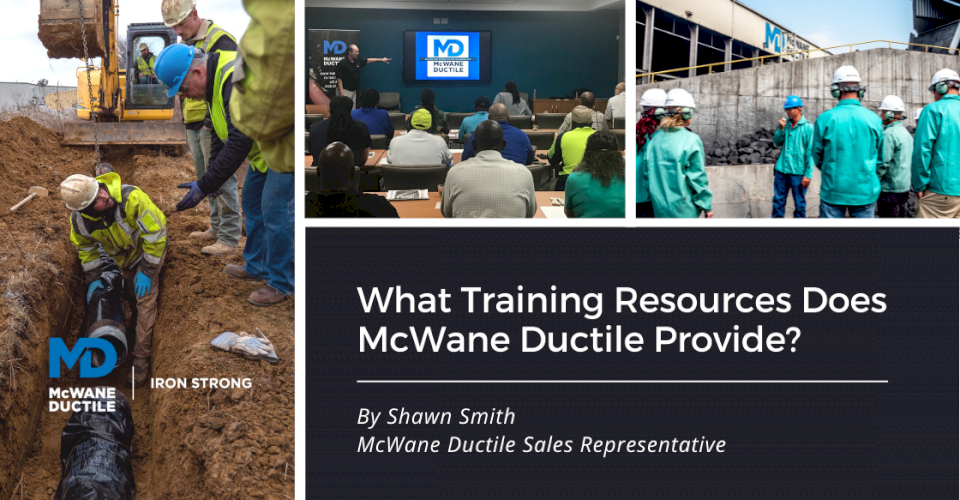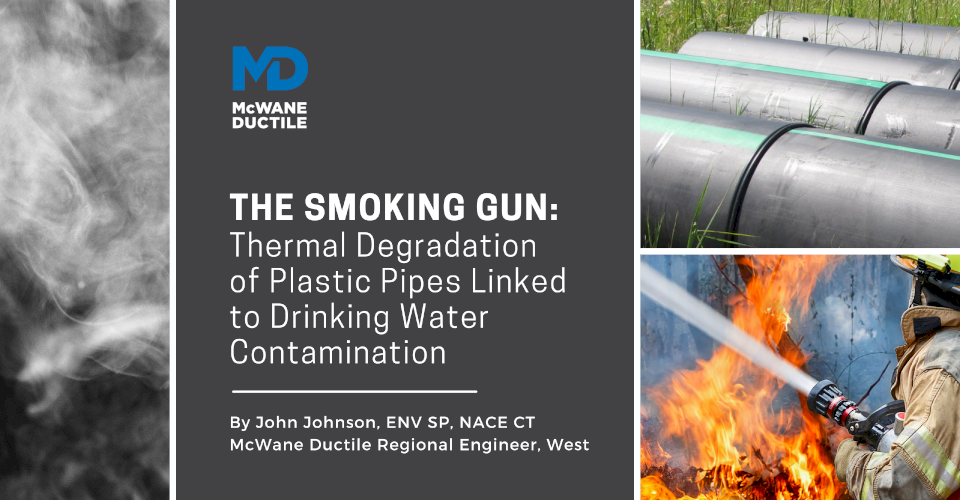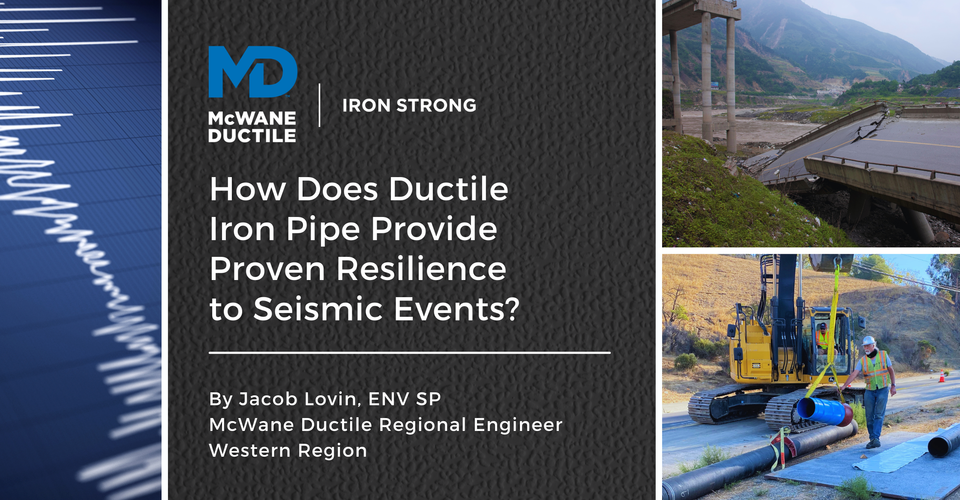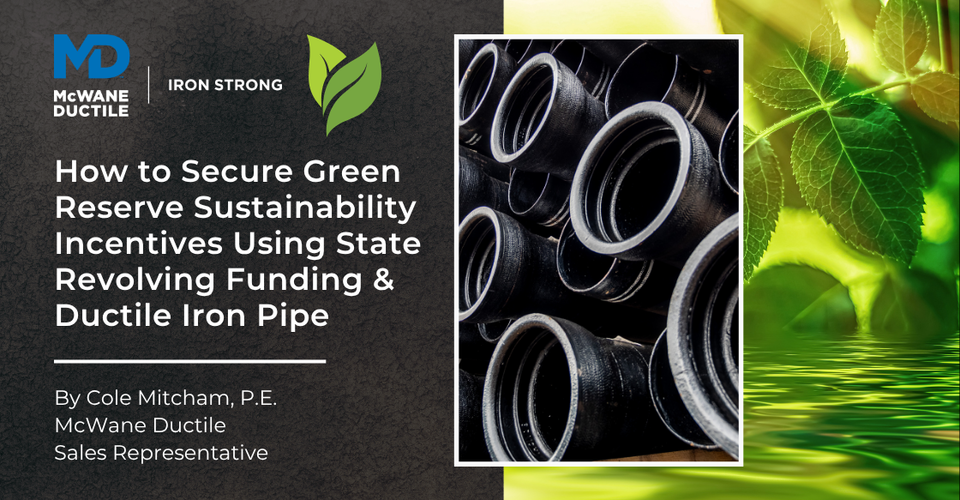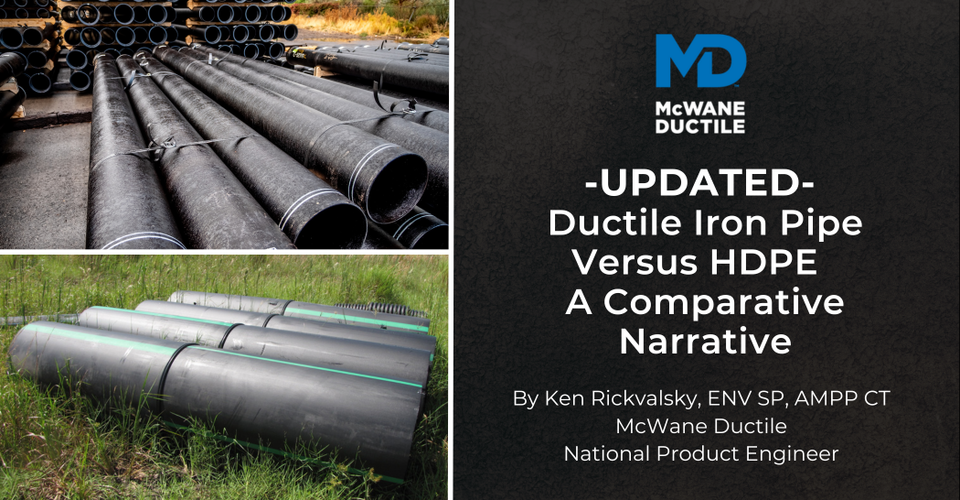-
What are Some Top FAQs on Ductile Iron Pipe?
09/13/2021 In Installation Products TechnicalAs a manufacturer of Ductile iron pipe (DI pipe), we often field questions from water professionals regarding DI pipe, its uses, and how to install it properly. We even receive numerous questions about alternate materials, their differences, their uses, and the best choice for the application. And of course, when you ask, we answer…honestly, even when the answer doesn’t include Ductile iron. In this Iron Strong Blog, we’ll cover a few of our frequently asked questions (FAQ) and provide some solutions. We will continue with this FAQ series in the upcoming months.
-
Vicinity Energy Cuts Greenhouse Gases with Ductile Iron Pipe
08/27/2021 In Installation ProductsVicinity Energy, headquartered in Boston, Massachusetts supplies many downtown Baltimore, Maryland business corridor buildings with reliable central water services, offering a cost-effective alternative to maintaining in-house cooling equipment. In this Iron Strong Customer Spotlight, we’ll take a closer look at a recent Ductile iron pipe (DI pipe) installation project that will provide a means for sustainable, affordable energy in the Baltimore area for many years to come.
-
How to Minimize Jobsite Issues During a Pipeline Installation Project
08/20/2021 In Installation ServicesThe goal for every pipeline project is to install the pipe and related appurtenances successfully within the timeframe and budget that the contractor bid the project. Sometimes, however, issues arise that may cause potential delays. These delays can cost time and money. The good news is there are ways to help minimize these occurrences with proper training and product understanding. In this Iron Strong Blog, we will discuss how a project can get off to a good start and lead to a successful installation.
-
What Training Resources Does McWane Ductile Provide?
08/09/2021 In Our Company ServicesAt McWane Ductile, we believe that training and continuous education for our staff and customers are vital to a company's success. Because of this, we offer a wide variety of training opportunities for water professionals throughout the industry. Here are the many training resources available to you.
-
The Smoking Gun: Thermal Degradation of Plastic Pipes Linked to Drinking Water Contamination
07/30/2021 In Environmental & Safety ProductsAs of October 2020, more than 47,000 wildfires have occurred across 36 U.S. states. Drought is a major factor, as a large portion of the West is currently experiencing the most severe level of drought, dubbed “exceptional drought” by the U.S. Drought Monitor. Humans cause the majority of wildfires with negligence such as unattended campfires, discarded cigarettes or arson, followed by natural causes such as unusually long-lasting hot lightning bolts. (U.S. Drought Monitor, 2012)
-
How to Use the McWane Pocket Engineer Flow Calculator – Number 2 in a Series of 11
07/21/2021 In Products TechnicalHow much water can I get through that pipe? What size pipe should I use to carry that much water? Two similar-sounding questions that, in truth, are entirely different. Not to mention, both are missing the keyword to consider in resolving each question, that word being "efficiently." The McWane Pocket Engineer (PE) Flow Calculator quickly and easily answers all three concerns - flow rate, pipe size, and flow efficiency.
-
What Does National Get to Know Your Customer Day Mean?
07/15/2021 In Our Company ServicesWhat is National Get to Know Your Customer Day? This day is observed annually on the third Thursday of each quarter (January, April, July, October). With so much business being conducted electronically, personal attention to customers can go by the wayside. Get to Know Your Customer Day is a fitting opportunity to turn that around, making a point of learning a little more about your customers. The better you know and understand your customer, the better you can serve them and their needs.
-
How Does Ductile Iron Pipe Go to Market? Understanding the Bidding Process
07/09/2021 In Our Company ProductsHow do you go to market? This isn’t a question we get often, but it comes up from time to time. Sometimes we're asked by a vendor we work with who is trying to understand McWane Ductile better. Sometimes a candidate asks the question during an interview or a new sales representative asks while we’re onboarding. Other times we have a hard-working team member at one of our manufacturing facilities trying to understand further what and where the product they make goes and how it gets there. In this blog, we will look at the different bidding processes we encounter on a day-to-day basis that allow us to take Ductile iron pipe to market.
-
What Did I Dig Up - Gray Iron or Ductile Iron Pipe?
06/25/2021 In Products TechnicalSo, the site plans say, "… connect to existing iron pipe." Now that we’ve dug down to it, I can’t tell if it is gray iron or Ductile iron pipe. Are there ways to reliably distinguish between the two without some physical testing on a sample? In this blog, we'll take a closer look at the characteristics and differences between the two types of pipe.
-
What is Open Procurement from an Engineer’s and Utility Manager’s Perspective?
06/11/2021 In Products TechnicalThere is a national effort to deny engineers, utilities, municipalities, public entities, and other waterworks professionals the ability to design water, wastewater, and stormwater projects in the manner that best serves the needs of their community. This effort focuses on water system piping but could be expanded to other infrastructure materials, as well. This blog contains a Q&A session conducted with a civil engineer, John Simpson, and a former utility manager, Roy Mundy, regarding Open Procurement.
Latest Posts
- Can Joining Water Works Industry Organizations Help You Grow Professionally? 10/21/2025 In Careers WaterWorks
- How Does Ductile Iron Pipe Provide Proven Resilience to Seismic Events? 09/04/2025 In Products Resiliency Technical
- How to Secure Green Reserve Sustainability Incentives Using State Revolving Funding & Ductile Iron Pipe 07/29/2025 In Energy Products Technical
- UPDATED - Ductile Iron Pipe Versus HDPE - A Comparative Narrative 05/29/2025 In Comparisons Products Technical




